- News
- Reviews
- Bikes
- Components
- Bar tape & grips
- Bottom brackets
- Brake & gear cables
- Brake & STI levers
- Brake pads & spares
- Brakes
- Cassettes & freewheels
- Chains
- Chainsets & chainrings
- Derailleurs - front
- Derailleurs - rear
- Forks
- Gear levers & shifters
- Groupsets
- Handlebars & extensions
- Headsets
- Hubs
- Inner tubes
- Pedals
- Quick releases & skewers
- Saddles
- Seatposts
- Stems
- Wheels
- Tyres
- Tubeless valves
- Accessories
- Accessories - misc
- Computer mounts
- Bags
- Bar ends
- Bike bags & cases
- Bottle cages
- Bottles
- Cameras
- Car racks
- Child seats
- Computers
- Glasses
- GPS units
- Helmets
- Lights - front
- Lights - rear
- Lights - sets
- Locks
- Mirrors
- Mudguards
- Racks
- Pumps & CO2 inflators
- Puncture kits
- Reflectives
- Smart watches
- Stands and racks
- Trailers
- Clothing
- Health, fitness and nutrition
- Tools and workshop
- Miscellaneous
- Buyers Guides
- Features
- Forum
- Recommends
- Podcast
feature
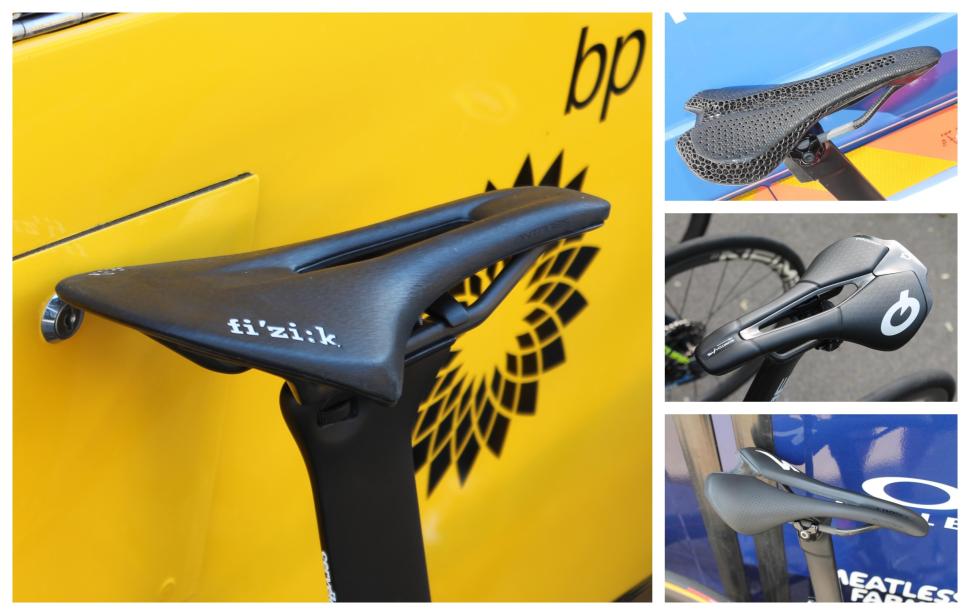 2023 Dauphine saddles - 1
2023 Dauphine saddles - 1Saddles of the peloton: which models do Tour de France riders use to stay comfortable?
What sort of saddle would you use if you were riding over 100 miles nearly every day for three weeks straight? Here are the saddles the pros choose, and they’re a varied bunch, to say the least.
We used to see quite a lot of pros on saddles from brands that weren’t sponsoring their team. They might find a favourite saddle and stick with it for years, blacking out the logos so as not to make it too obvious.
> Check out the best road bike saddles 2023
This is far less common than it once was. Most brands now have extensive ranges and clever fit systems that are designed to cater for everyone. Plus, social media means that non-sponsored components are far less likely to slip under the radar.
That said, we did spot this saddle on one of Elmar Reinders' bikes. Team Jayco Alula officially use saddles from Giant and its Cadex brand, but there’s no 3D-printed option from those guys. This saddle looks like a £400 Fizik Vento Argo 00 Adaptive with a little bit of black tape covering the logo at the rear. Fair play, they’ve done it neatly enough, but the 3D structure gives the game away.
> Read our Fizik Vento Argo 00 Adaptive saddle review
There are more 3D-printed saddles in the pro peloton now than ever before. Brands say that the lattice structure allows cushioning and support to be finely tuned in different areas more than is possible with traditional construction methods.
Ineos Grenadiers use saddles from Fizik, including 3D options. Ben Turner’s Pinarello Dogma F road bike is fitted with this Vento Argo Adaptive saddle, the same model used by Elmar Reinders (above) – but without the dark glasses and false moustache. It’s a short-nose saddle with a claimed weight of 175g.
Attila Valter of Jumbo-Visma prefers the Fizik Antares Versus Evo 00 Adaptive which features two separate 3D-printed pads that leave a channel down the centre of the saddle designed to relieve pressure on soft tissue.
This is a popular saddle in the pro peloton. AG2R Citroen’s Aussie rider Ben O’Connor, for example, uses the same model.
Edvald Boasson Hagen uses this Specialized S-Works Romin EVO with Mirror saddle, for example, as do many other riders on the Bora-Hansgrohe, Soudal Quick-Step and TotalEnergies teams.
> Check out our Specialized S-Works Romin Evo Mirror saddle review
Specialized claims there are 22,000 struts and 10,700 nodes (points where the struts join) per saddle. We'll take its word for that.
Specialized offers several 3D-printed saddles. Bora-Hansgrohe’s Ryan Mullen, who isn’t racing the Tour, had this S-Works Power with Mirror saddle on his time trial bike at the Critérium du Dauphiné, for example, with a carbon shell and rails.
> Here's our review of the Specialized S-Works Power with Mirror Saddle
Fizik and Specialized work with US company Carbon for their 3D-printing, as does Selle Italia.
Carbon says, “Carbon Digital Light Synthesis (Carbon DLS) is a breakthrough resin-based 3D printing process that uses digital light projection, oxygen-permeable optics, and engineering-grade materials to produce polymeric parts with exceptional mechanical properties, resolution, and surface finish. The Carbon DLS process allows engineers and designers to iterate faster and radically reimagine their products by making possible consolidated parts, unmouldable geometries, and software-tunable lattices.”
A whole lot of tech goes into creating a comfy saddle these days.
Far from all riders take up the option of a 3D-printed saddle, though. David Gaudu (Groupama - FDJ), for example, goes for a fairly traditional-looking Prologo Nago Evo with Nack carbon rails to keep the weight down to a claimed 187g.
> Review: Prologo Nago Evo CPC saddle
EF Education-EasyPost uses Prologo saddles too. This is the Scratch M5 CPC on one of Richard Carapaz’s training bikes (hence the Ass Saver clip-on mudguard). Carapaz was forced to abandon the Tour after a crash on Stage 1.
The saddle upper is divided into various distinct sections. Prologo calls this its Multi Sector System (MSS), the idea being that “active foam pads, separated from each other, create independent zones that work smartly and individually, favouring the natural movement of the pedalling phases both of pushing and pulling, absorbing the vibrations that the base transfers to the saddle”.
The cover features Prologo’s CPC technology which has been around for a few years now.
Prologo says, “The 3D polymer cones maximise the grip when assuming an aggressive position.”
CPC is used across various saddle platforms. This rider is using a Prologo Zero II with CPC panels, for example.
> Check out our Prologo Zero II PAS CPC Nack saddle review
Looking around the pro peloton, most riders prefer a hole or at least some form of channel in the centre of the saddle to avoid pressure in that area.
Movistar’s Enric Mas, for instance, uses a Fizik Vento Argo 00 short-nosed saddle – the non-3D version – with low-bulk cushioning and a huge cutout in the centre.
Teammate Nelson Oliveira uses the longer Fizik Vento Antares 00. That short white line that you can see in the middle of the saddle is used as a reference by the mechanics when they’re setting up bikes for the individual riders. It helps them get the measurements exactly right, and we all know how keen pro teams are when it comes to detail.
Current Tour de France race leader Jonas Vingegaard uses the same Fizik Vento Antares saddle. Even though it’s 270mm long, the claimed weight is just 118g.
Over at Soudal Quick-Step, Julian Alaphilippe opts for Specialized’s S-Works Romin Evo with a similarly large cutaway section in the centre.
When we reviewed this saddle, we said it was brilliant for riders who favour a low, aero riding position. It’s the stiffest pedalling platform in Specialized’s range, and we loved that about it, but we know that some people prefer a bit more give.
> Check out our review of the Specialized S-Works Romin Evo saddle
DSM-Firmenich ride Scott bikes and use many components from the Scott-owned Syncros brand, including saddles. The Belcarra is a popular choice and comes in various forms. This is the Belcarra V 1.0 Cut Out which is intended for flexible riders who tend to sit towards the front of the saddle.
Lotto Dstny’s climber Maxim Van Gils uses the Selle Italia SLR Boost Pro Team Kit Carbonio Superflow – which has to be about the longest saddle name out there – on his prototype Ridley.
The SLR has been around in various forms for many years. This model has carbon rails while the ‘Superflow’ part of the name refers to the large cutout that reduces pressure on the perineum.
The Specialized Power saddle shape is well-liked at Bora-Hansgrohe. Irish rider Sam Bennett (who isn’t riding the Tour de France) foregoes the usual carbon-fibre rails in favour of hollow titanium. This looks like the Specialized Power Expert (£115) that’s less than half the price of the top-level S-Works model (£240). It’s a little heavier too but some riders prefer metal rails for resilience in the event of a crash.
> Read our review of the Specialized Power Expert Saddle
This Astana rider has opted for a Proxim W650 Performance saddle rather than one of the more popular models from Prologo’s range. The rails are made from TiroX which is a form of steel. In this 145mm width, the saddle comes in at a claimed 220g. That’s not exactly heavy but it’s an unusual choice in the pro peloton when Prologo offers options that are considerably lighter.
Something like this Prologo Dimension shorty saddle with Nack carbon rails on the bike of Georg Zimmermann (Intermarché-Circus-Wanty) is a more common selection. Prologo claims a weight of 155g for this one and the one we reviewed hit the road.cc Scales of Truth at 157g... so we’ll give ’em that.
> Review: Prologo Dimension Nack Saddle
UAE Team Emirates' Adam Yates uses a Prologo Dimension Space 153 with Nack carbon rails.
It sits on top of a superlight seatpost from Darimo.
This Prologo Scratch M5 PAS on an Intermarché bike is superlight at 134g. PAS stands for Perineal Area System and it’s Prologos take on a channel designed to avoid pressure.
We mentioned earlier that Jayco’s Chris Harper is using a thinly disguised Fizik saddle but the rest of the team are all using sponsor-correct options from Giant/Cadex. Sprinter Dylan Groenewegen uses this Cadex Boost shorty saddle, for example, which uses what the brand calls ETPU Particle Flow technology for cushioning. Essentially, that means there are pockets under the microfibre cover and foam within them can mould to the rider’s anatomy.
> Read our review of the Cadex Boost Saddle
This Jayco rider is using the Giant Fleet SLR saddle which also uses the Particle Flow system. It’s another short-nosed option. When we reviewed it, we said the Giant Fleet SLR was comfortable, supportive, and nicely priced at £129.99.
> Check out our review of the Giant Fleet SLR saddle
The neutral service bikes – which riders can use if their own bike fails and there’s no team car around to provide a substitute – are fitted with Stealth saddles from Shimano’s Pro brand. This looks like a model with stainless steel rails.
Each neutral service bike is fitted with a quick-release seatpost clamp that allows the rider to get a saddle height that’s there or thereabouts.
Many riders use a standard saddle on their time trial bikes but others go for a TT-specific option because the pelvis is tilted further forward than on a road bike and they want padding that’s concentrated on the nose.
Jayco’s TT specialist Luke Durbridge uses this Giant saddle with metal rails and plenty of cushioning upfront, for example. If you can’t make it out, that’s the Shimano Di2 junction box tucked away at the front there.
Bora’s Nils Politt has this Specialized TTS time trial saddle with titanium rails. It’s a model that’s no longer available which might explain the grey duct tape on the cover. Even the pros have to make do and mend sometimes.
The new Transiro saddles are popular with Fizik-sponsored teams. This is Jonas Vingegaard’s Transiro Aeris R1 Long Distance, for instance, with carbon rails.
Fizik says, “The nose is split into two halves for an unprecedented pressure-relief system that maintains the firm support and balance needed for long hours spent pedalling in the aero, time-trial position.”
This Jumbo rider has grip tape stuck to the saddle cover to help keep him in position. It’s a long-established TT tradition, although it doesn’t necessarily do much for the health of your shorts.
Check out loads more Tour de France 2023 stories here.
Mat has been in cycling media since 1996, on titles including BikeRadar, Total Bike, Total Mountain Bike, What Mountain Bike and Mountain Biking UK, and he has been editor of 220 Triathlon and Cycling Plus. Mat has been road.cc technical editor for over a decade, testing bikes, fettling the latest kit, and trying out the most up-to-the-minute clothing. He has won his category in Ironman UK 70.3 and finished on the podium in both marathons he has run. Mat is a Cambridge graduate who did a post-grad in magazine journalism, and he is a winner of the Cycling Media Award for Specialist Online Writer. Now over 50, he's riding road and gravel bikes most days for fun and fitness rather than training for competitions.
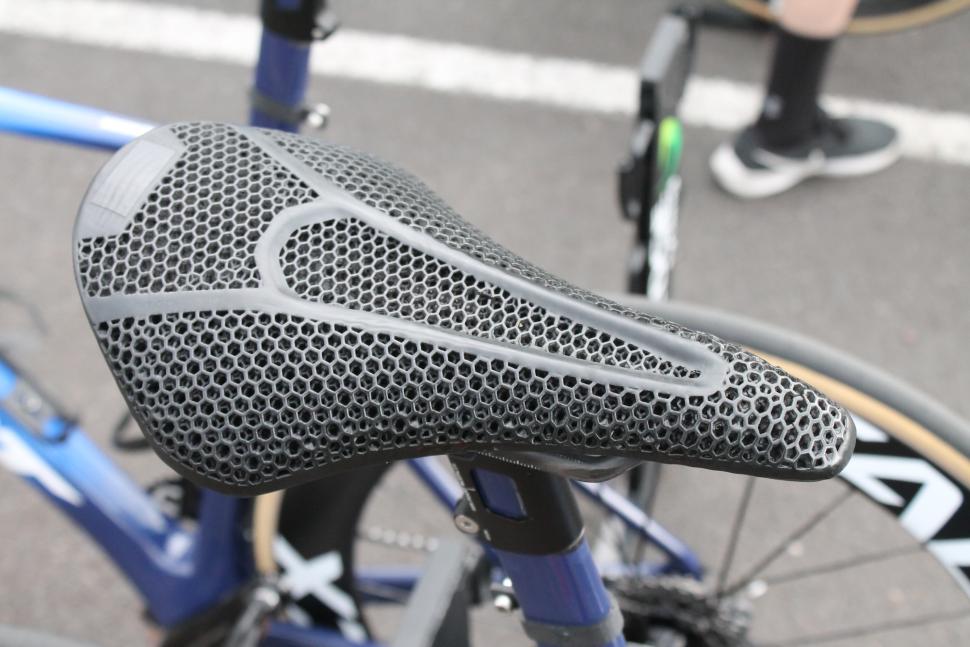
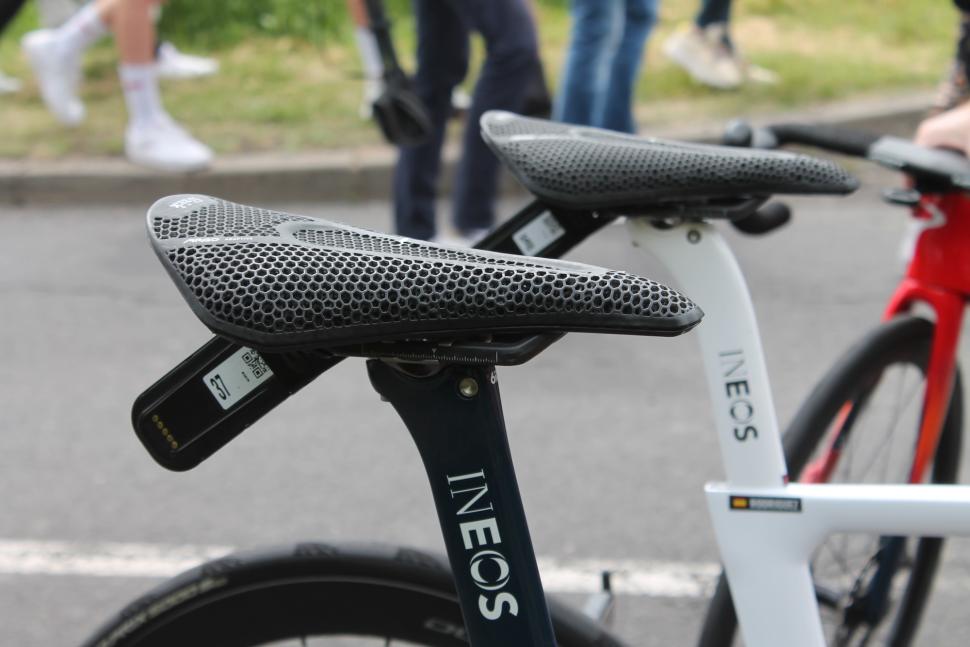
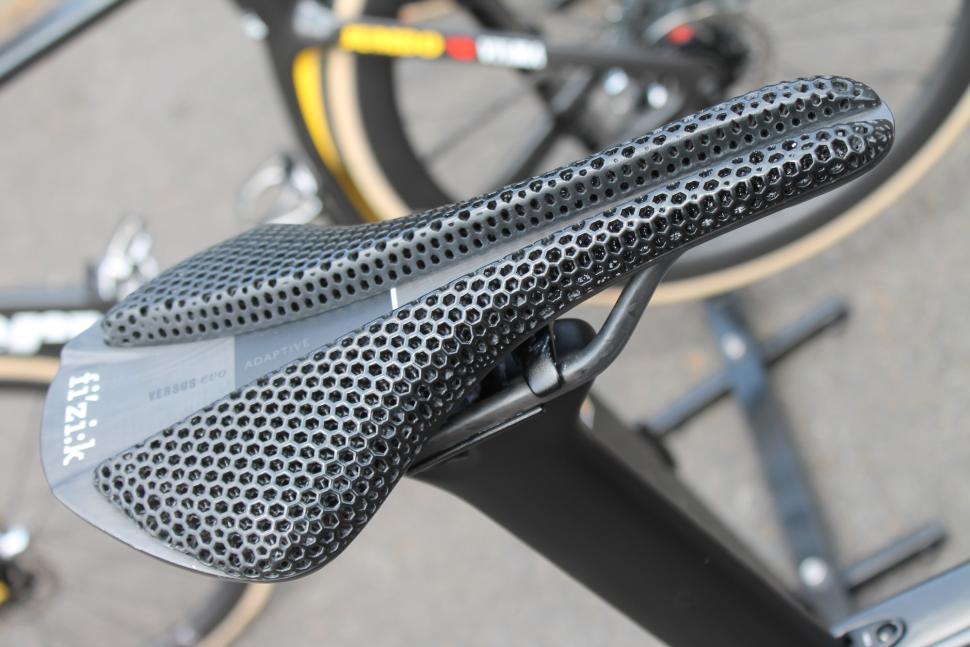
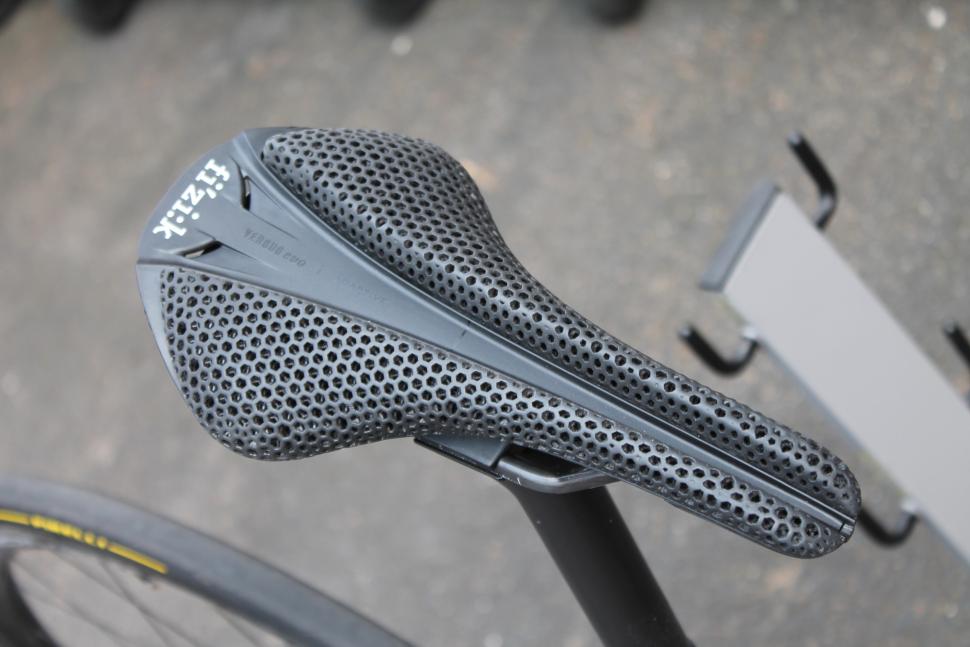
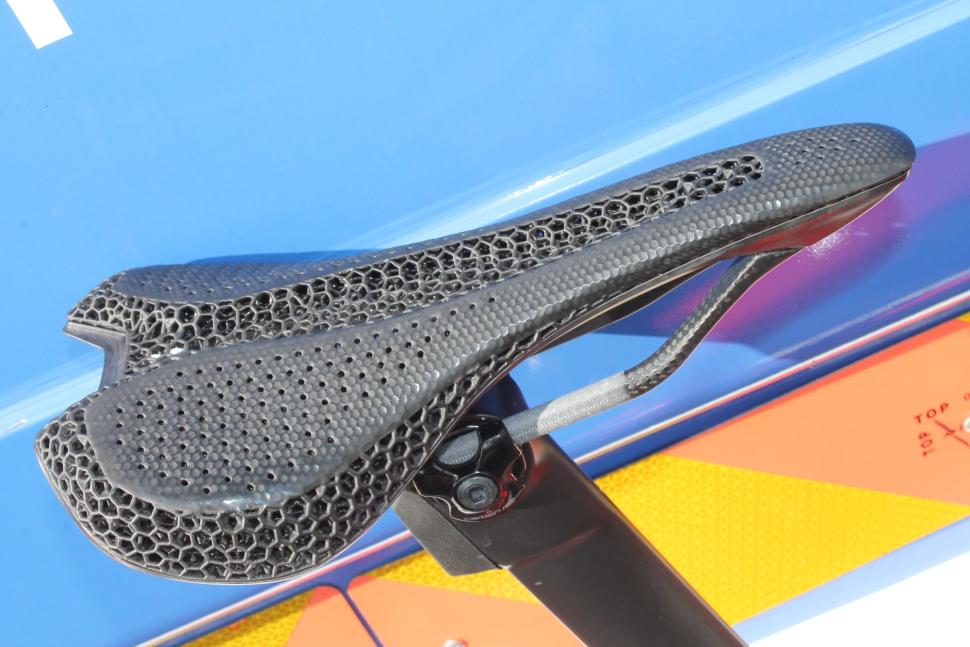
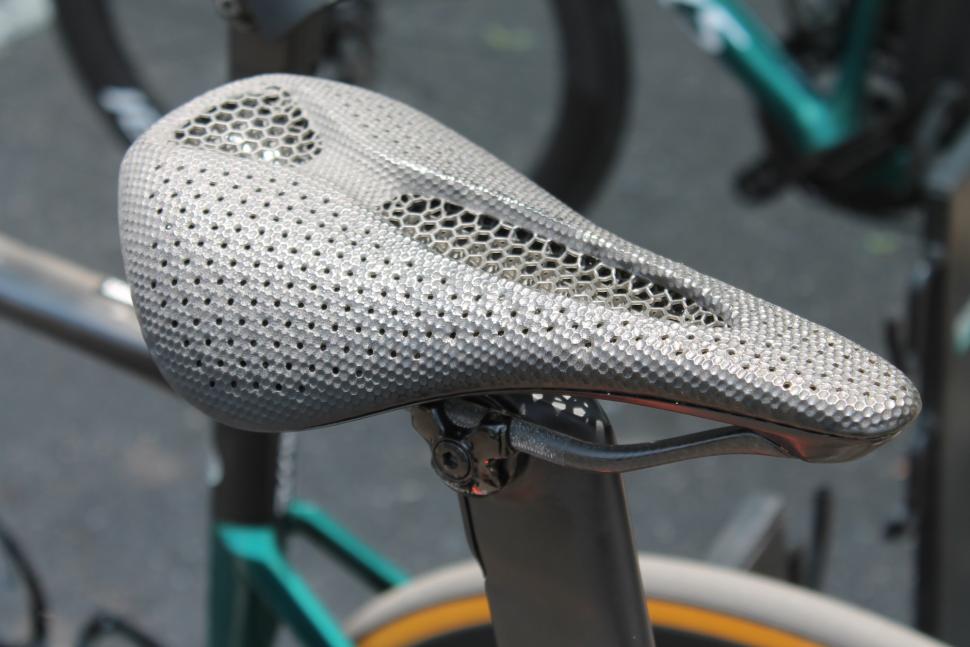
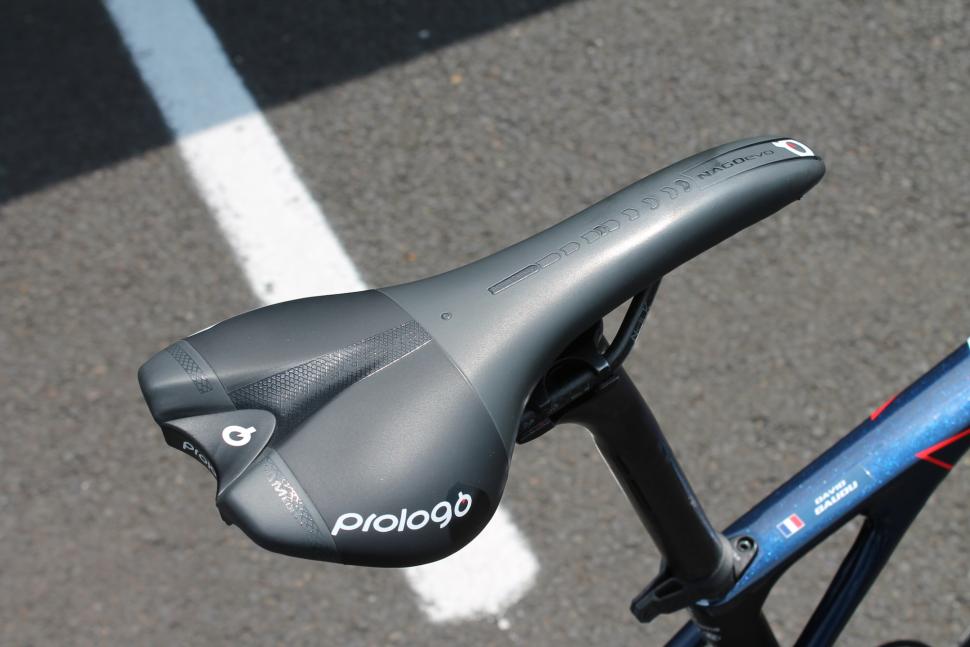
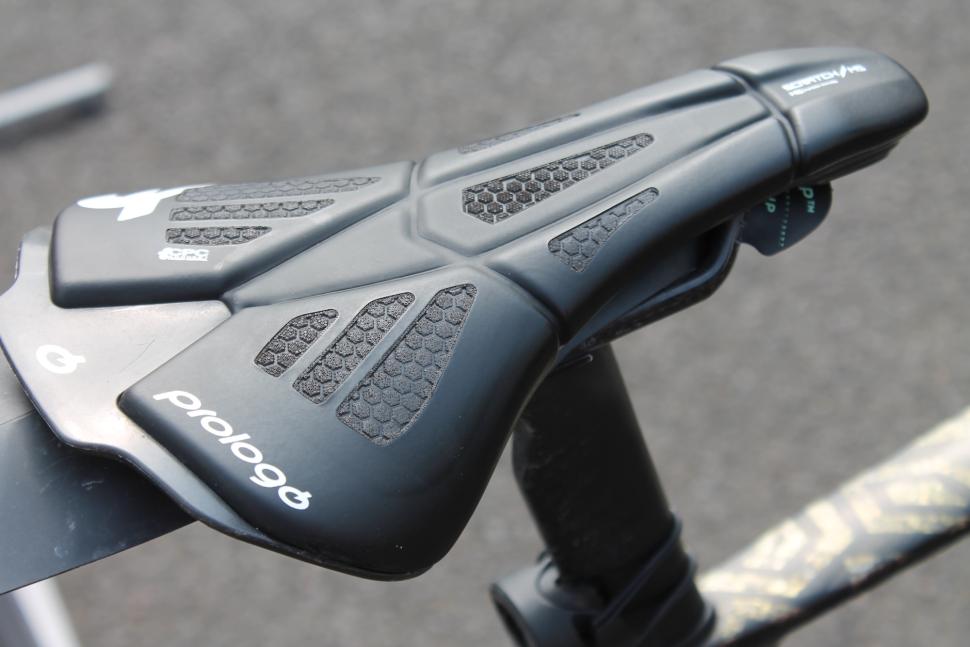
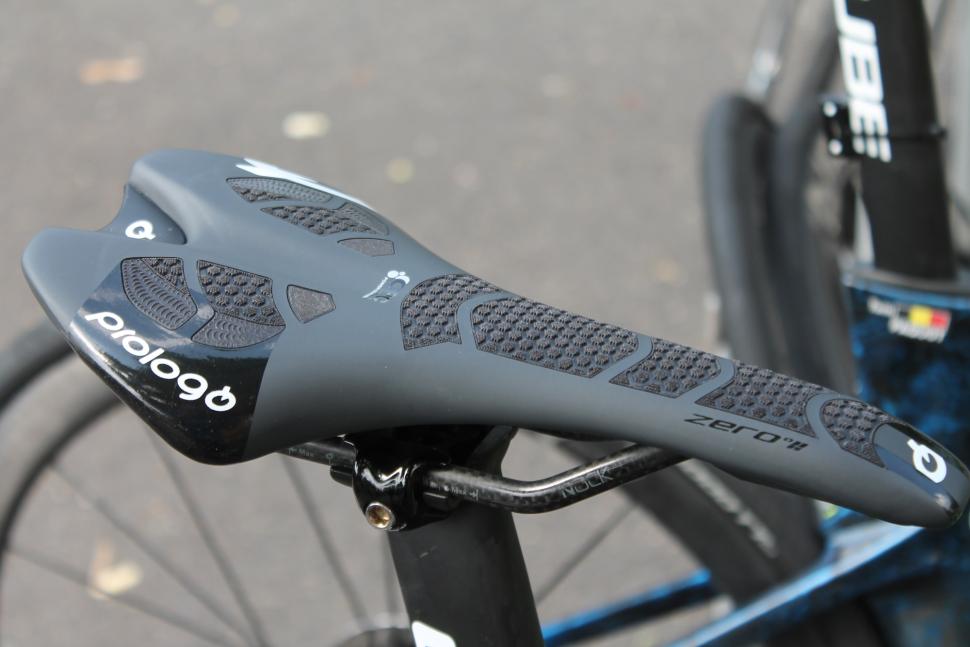
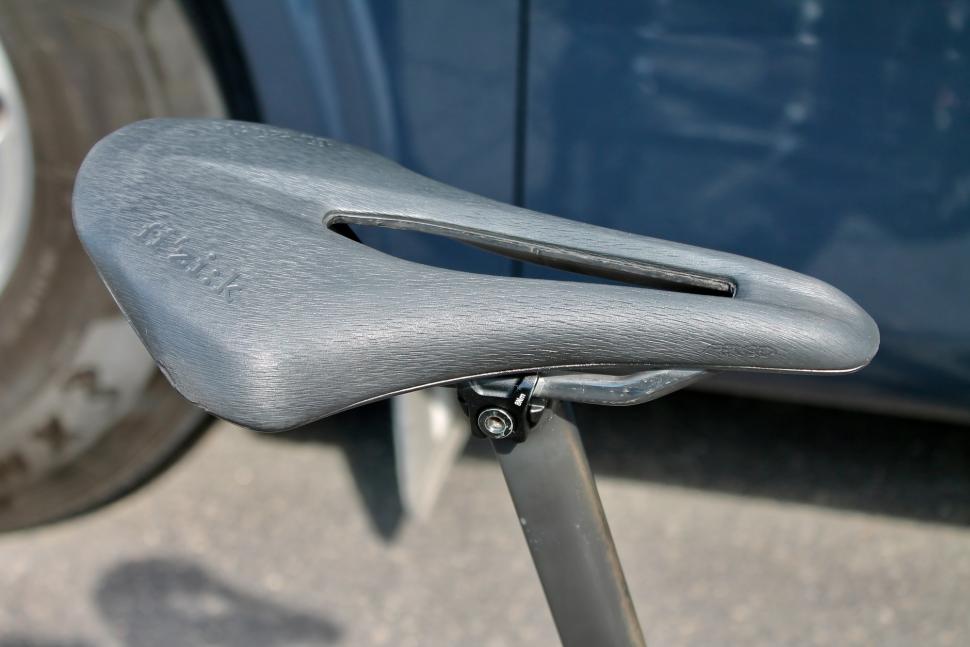
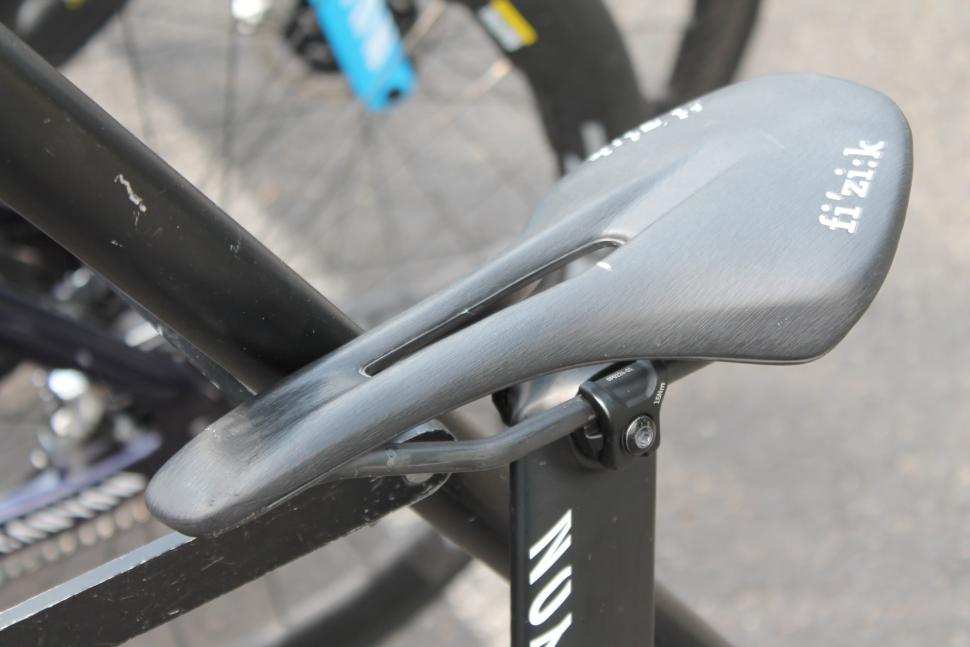
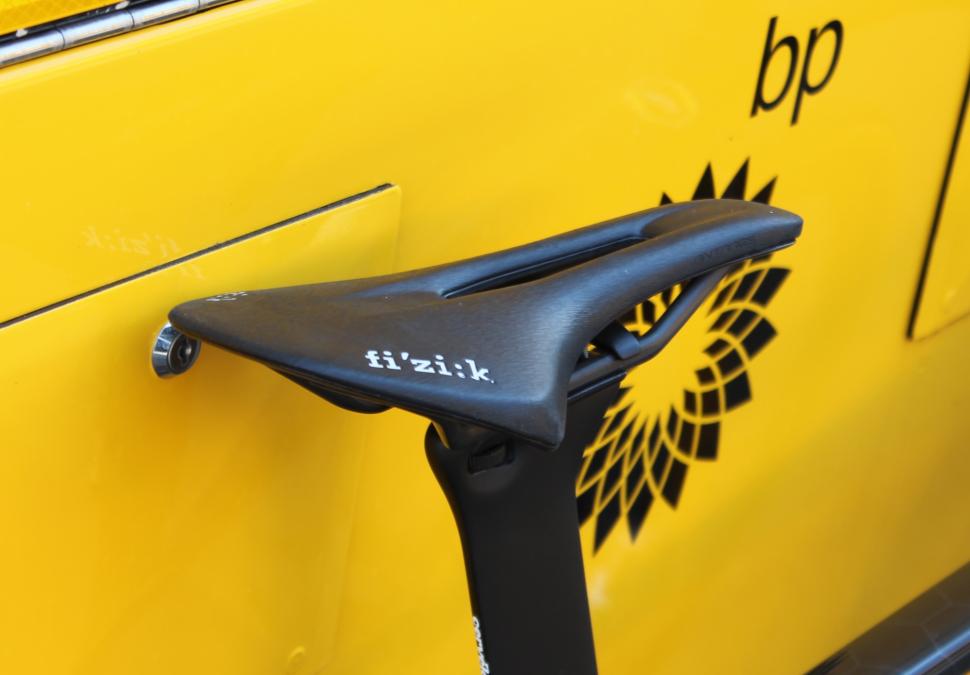
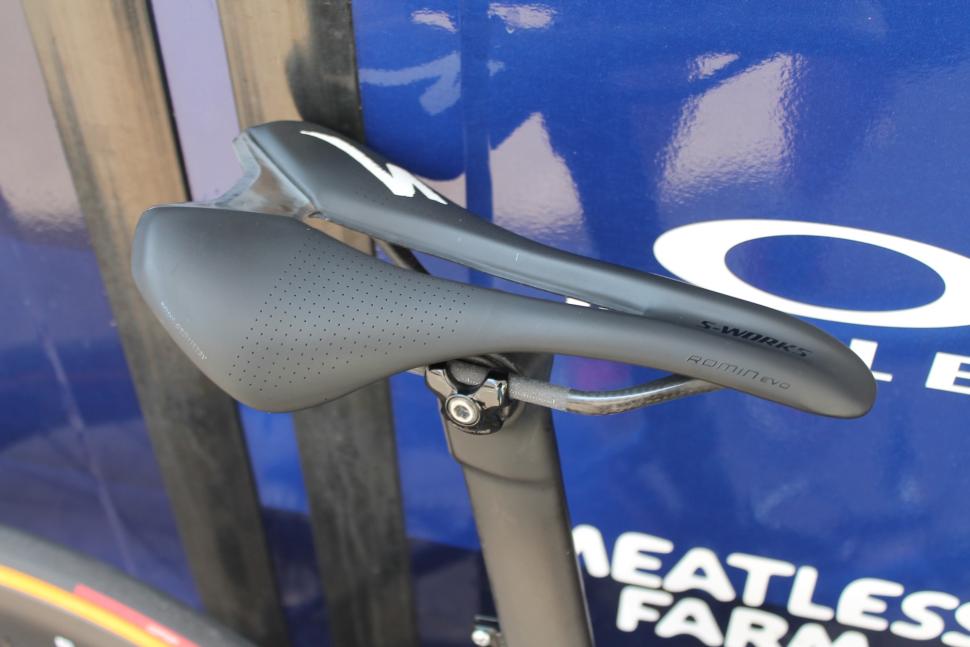
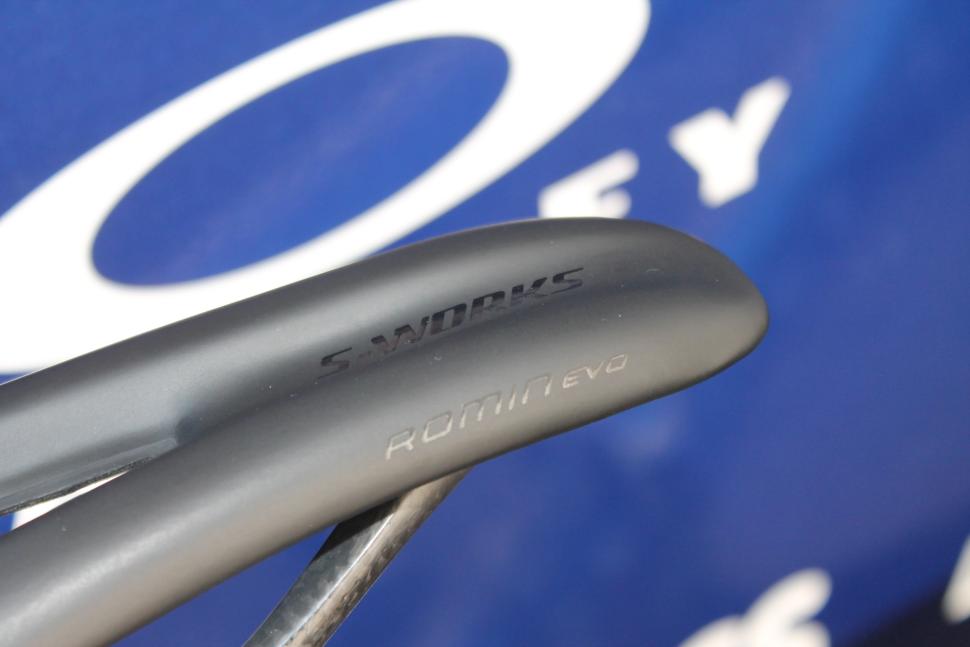
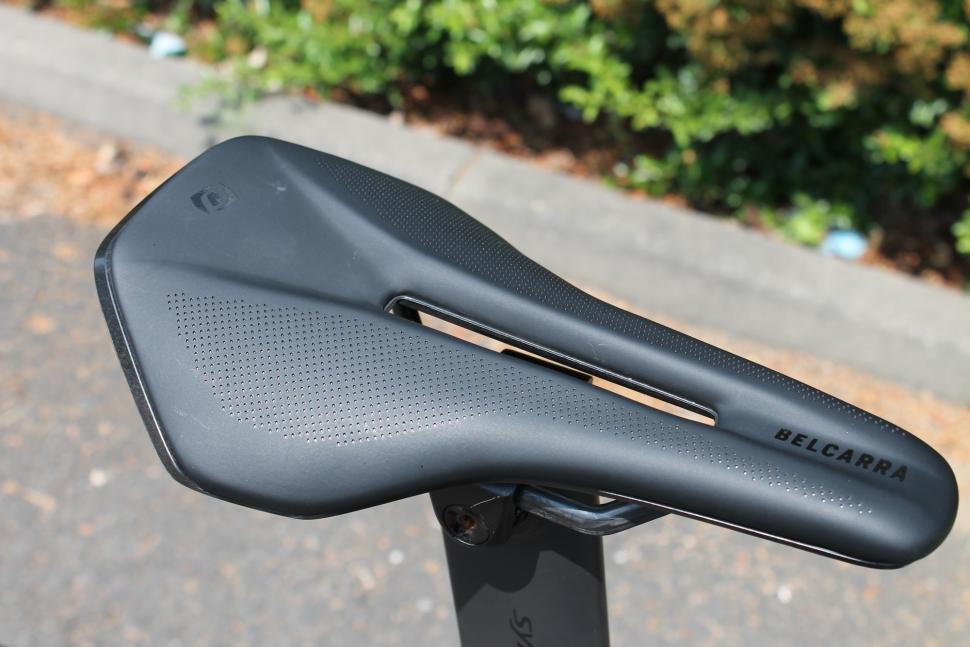
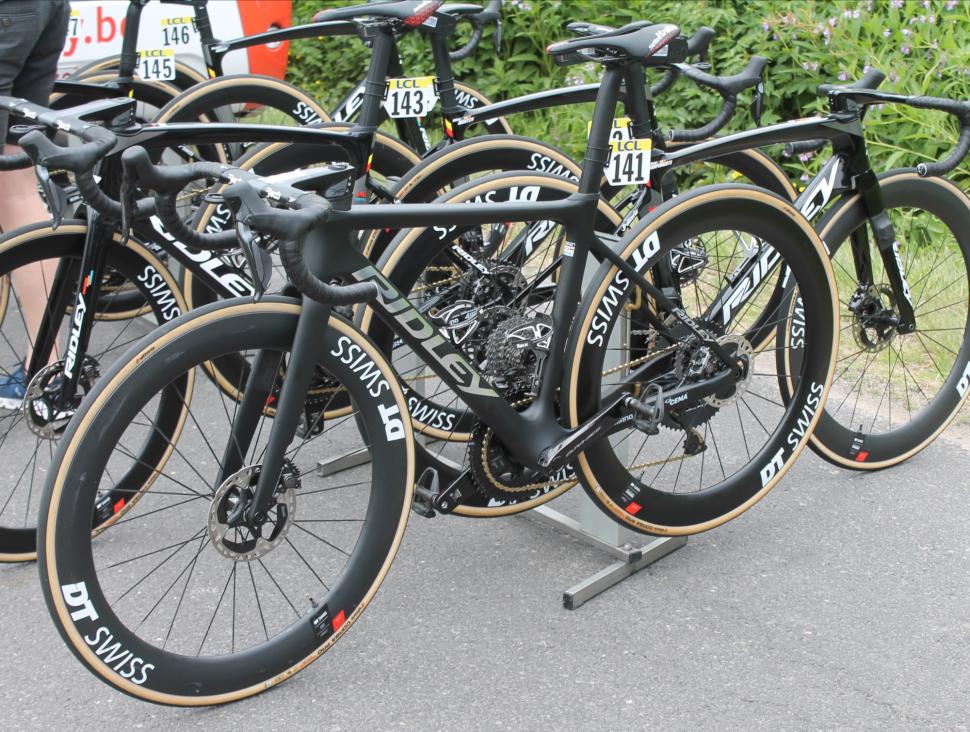
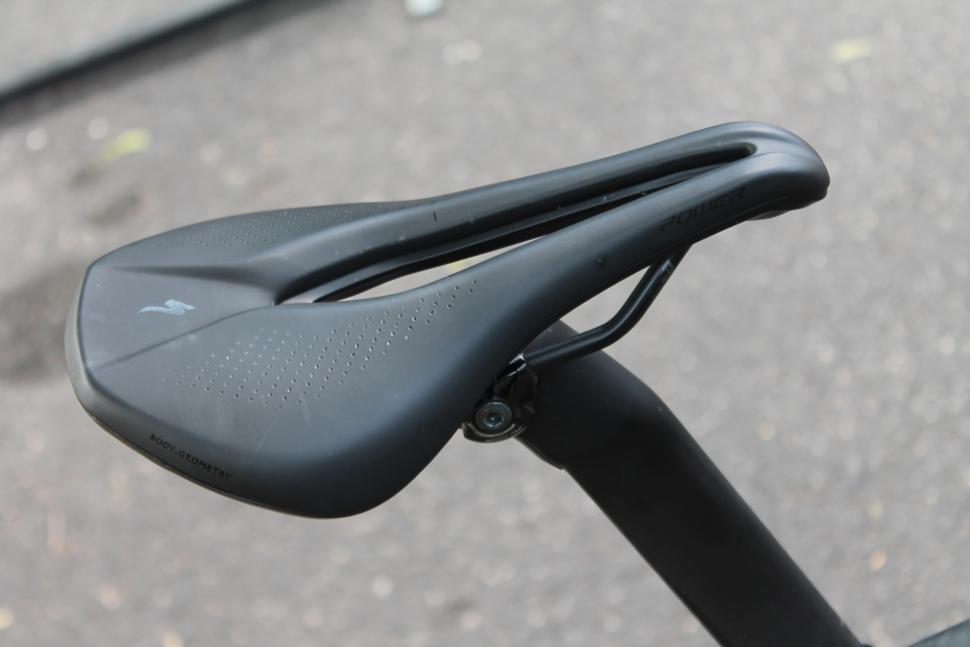
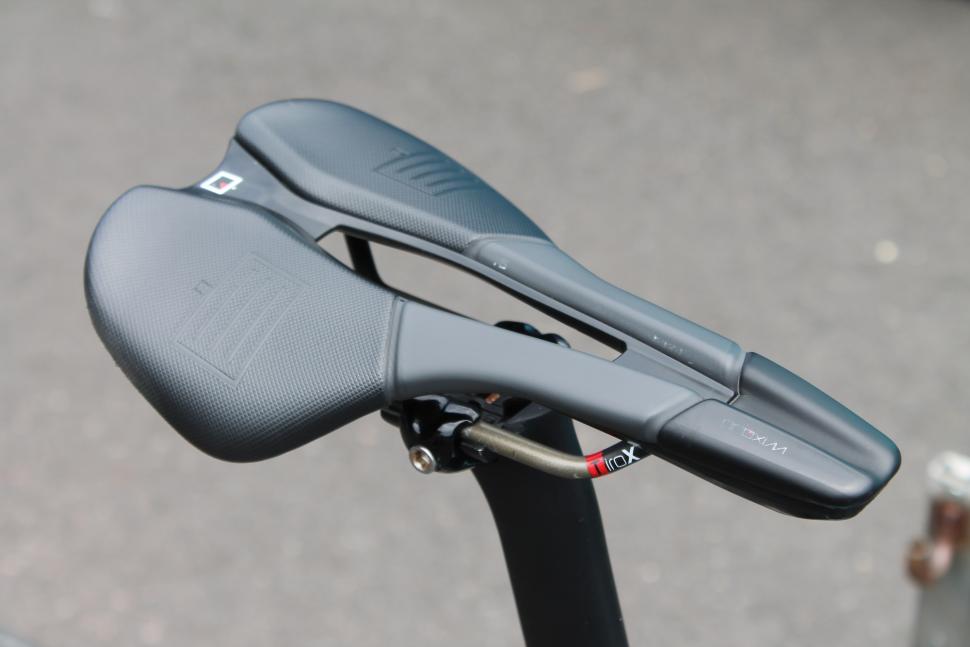
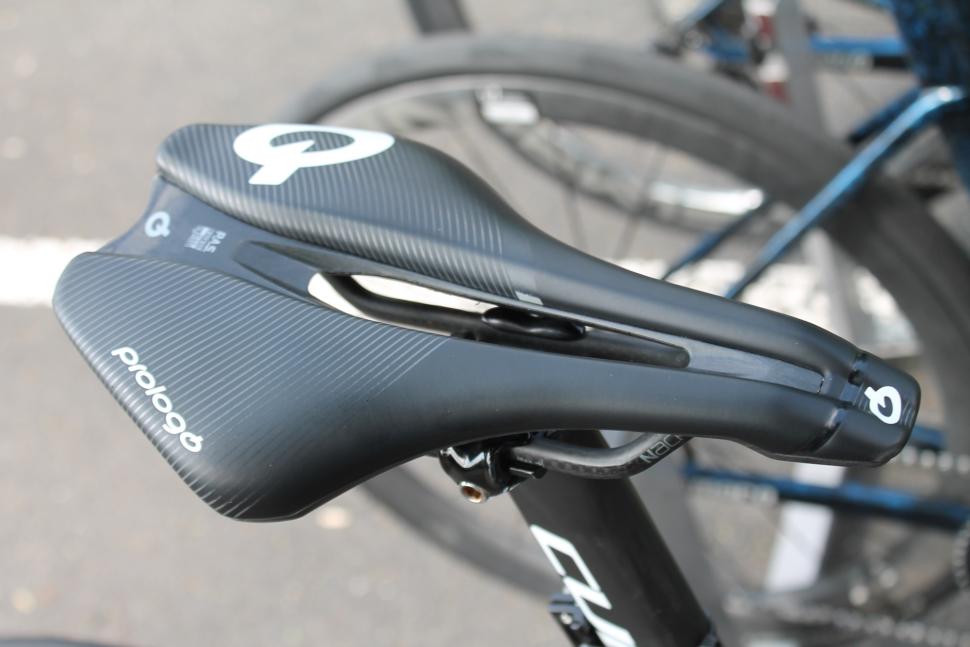
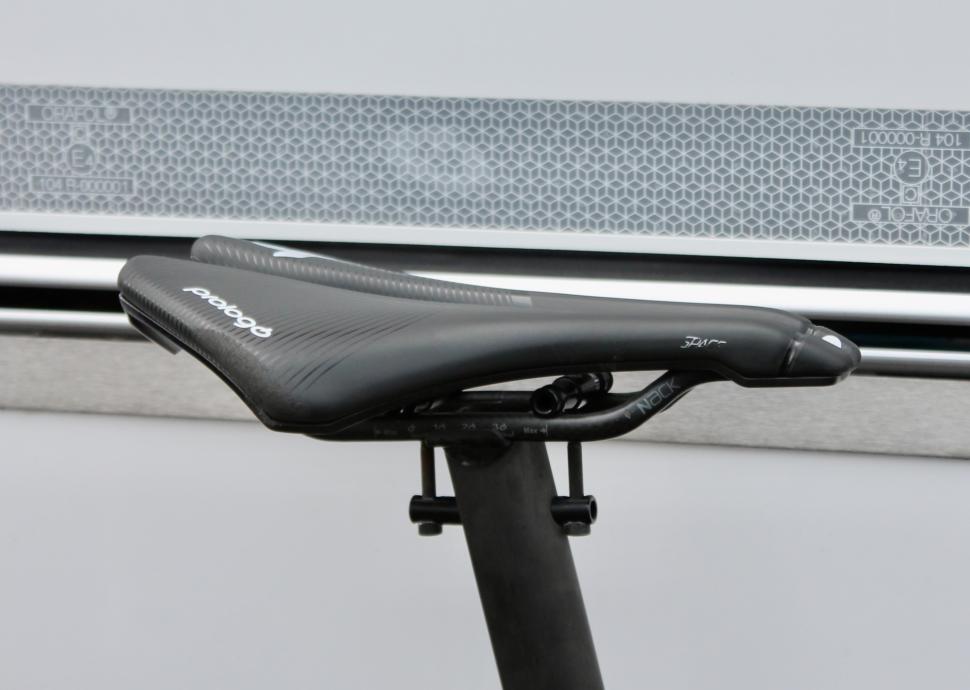
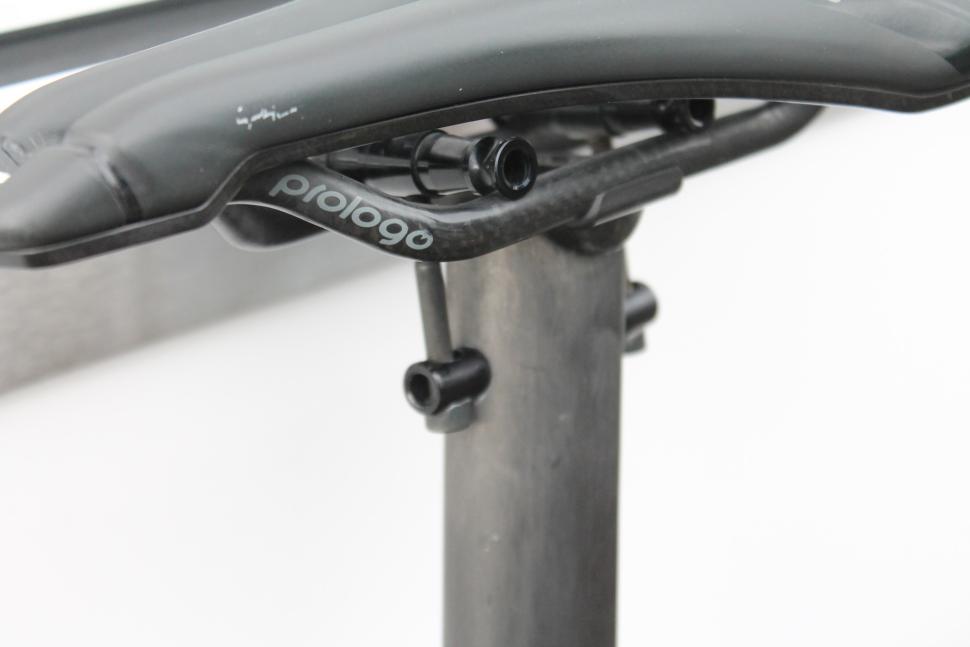
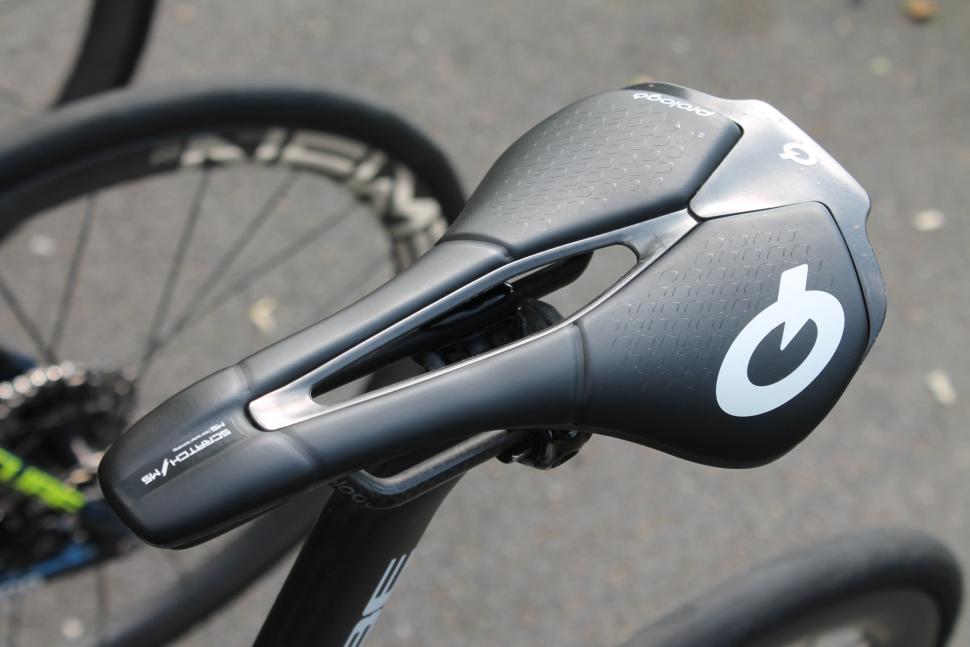
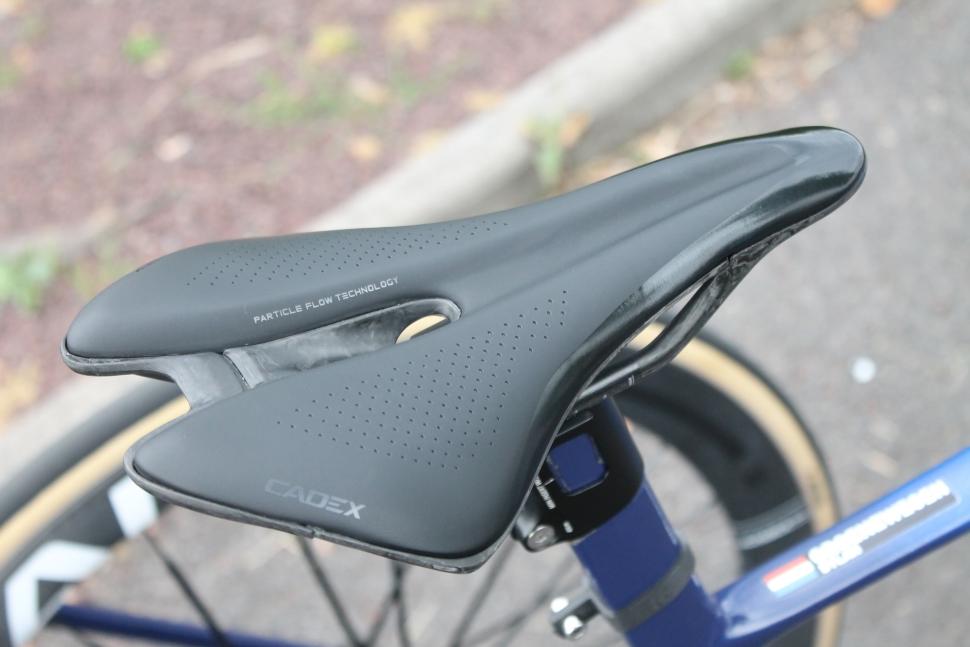
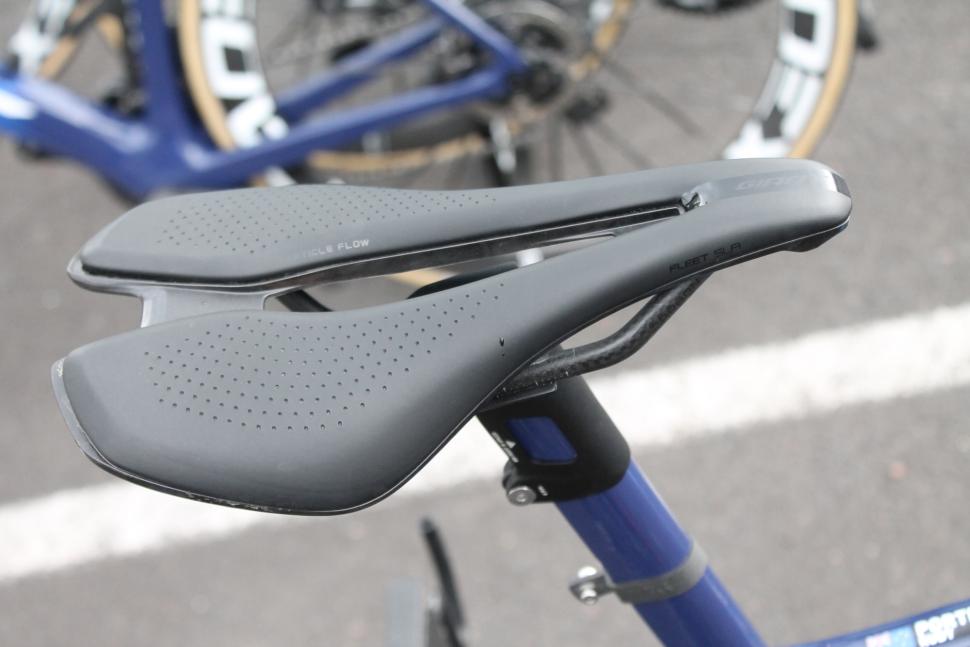
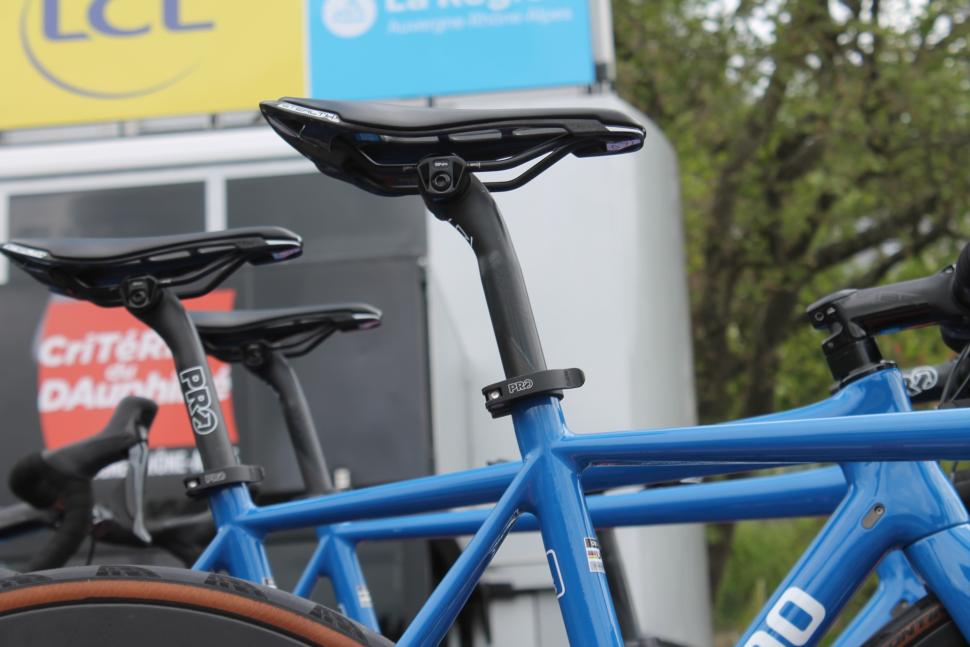
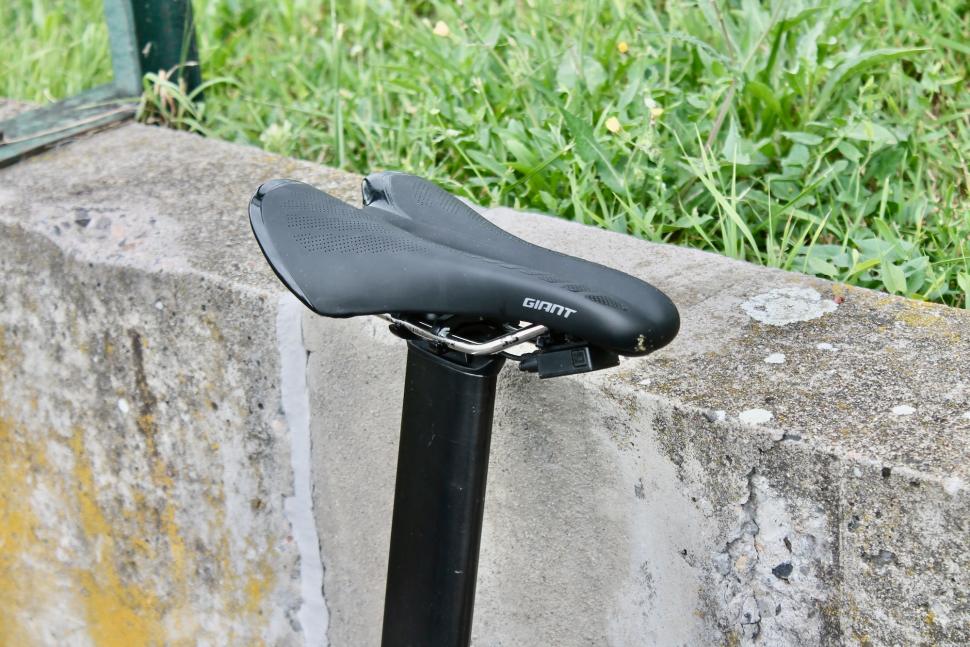
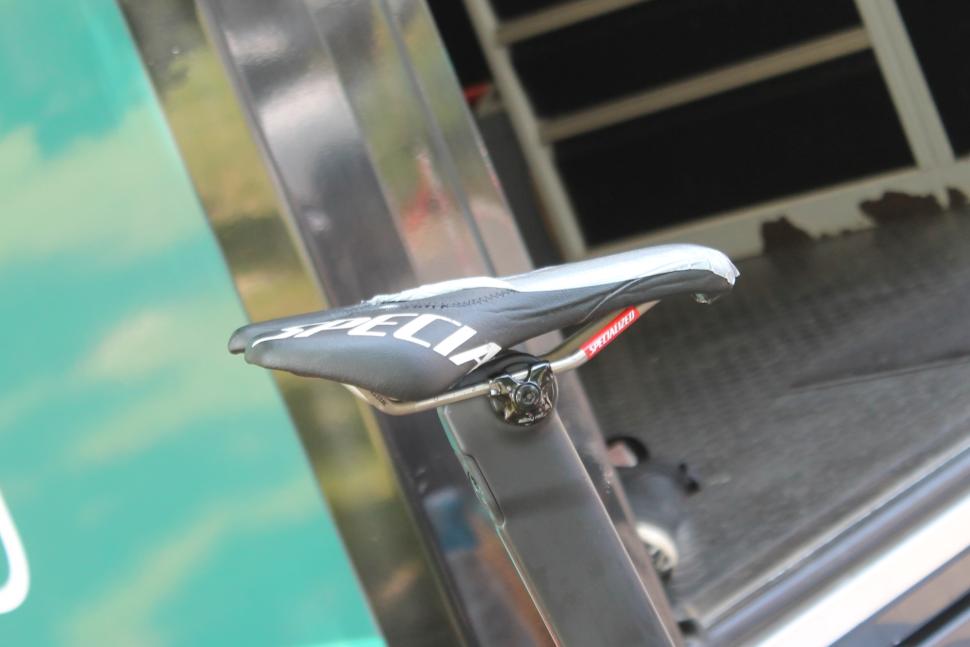
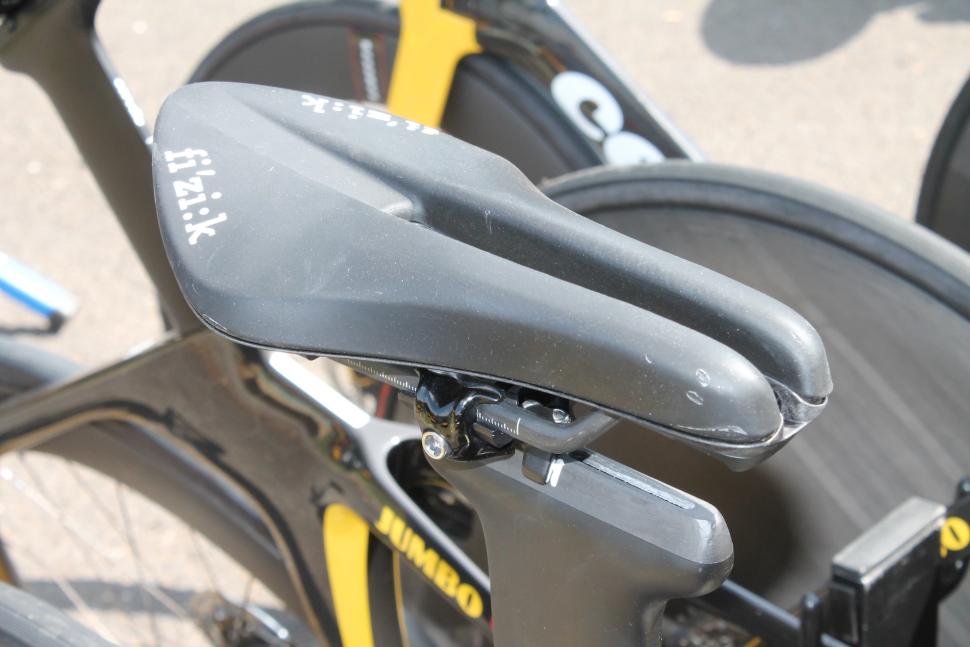
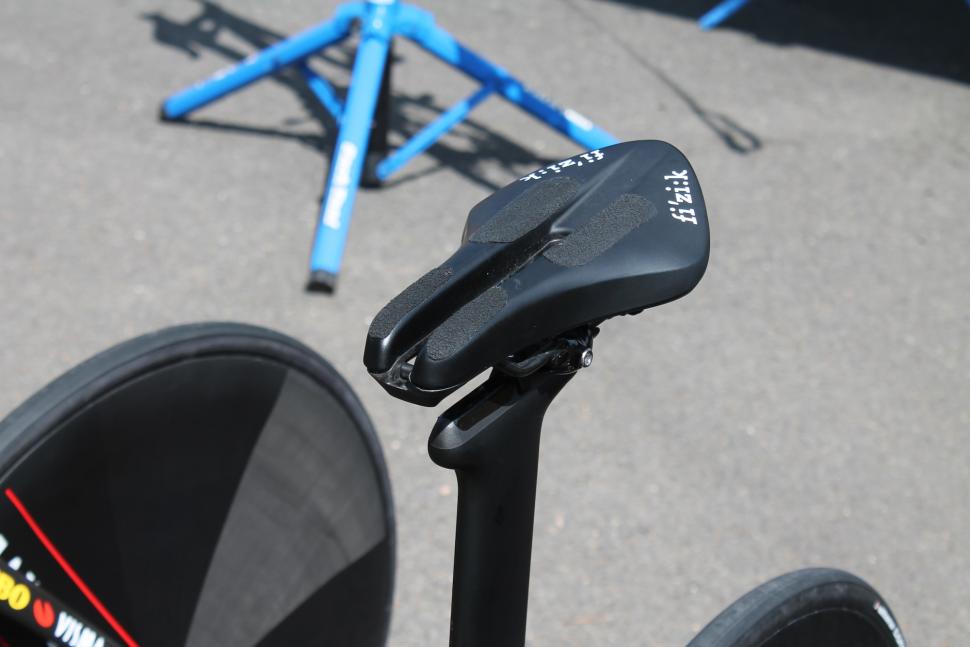
Um...no. Spitting is grim and there is never any excuse.
Q36.5 Gregarius Essential Bib Knickers fit the bill: 3/4 length bib tights for warm weather.
Jolly good. Only it hasn't been and it is still a public bridleway. Feel free to look it up.
"...it feels more like a £100+ jersey". It's almost as if cycling apparel is over priced.
I've had a few Lezyne bits and bobs over the years and while it's true I've never bothered to return anything under warranty, I've had a couple of...
There's a transition period. For the benefit in kind (BIK) tax to the employee, it will be treated as a goods vehicle as it is now (rather than a...
Parents say East Bristol Liveable Neighbourhood makes roads '100 times safer' for children:...
Isn't basically all carbon recycled? From stars?
As witnessed at so many infrastructure improvement projects similar to this one, all those who object should ignore the consultation and pray at...
It's a DLO to those in the trade.